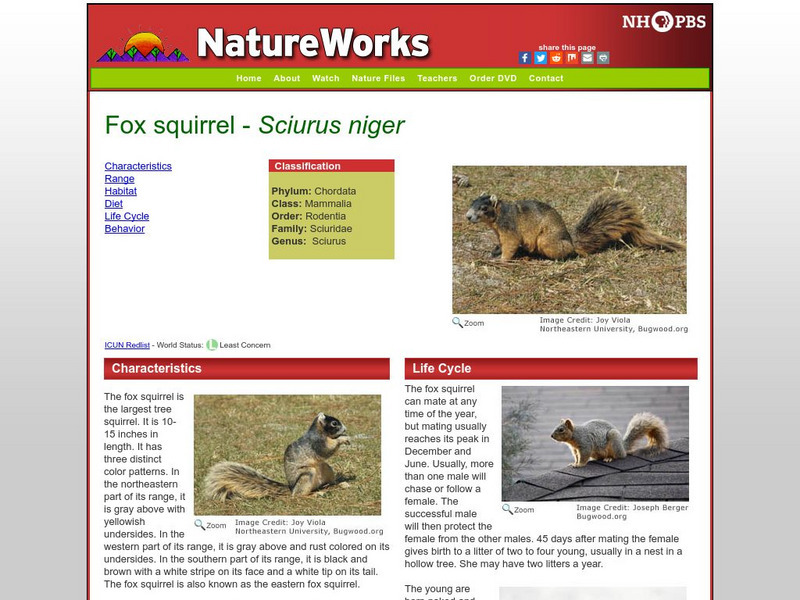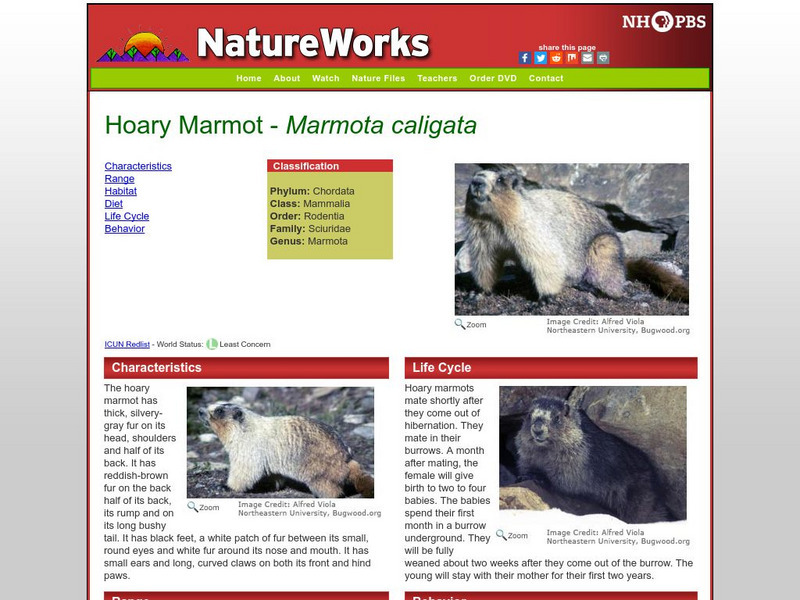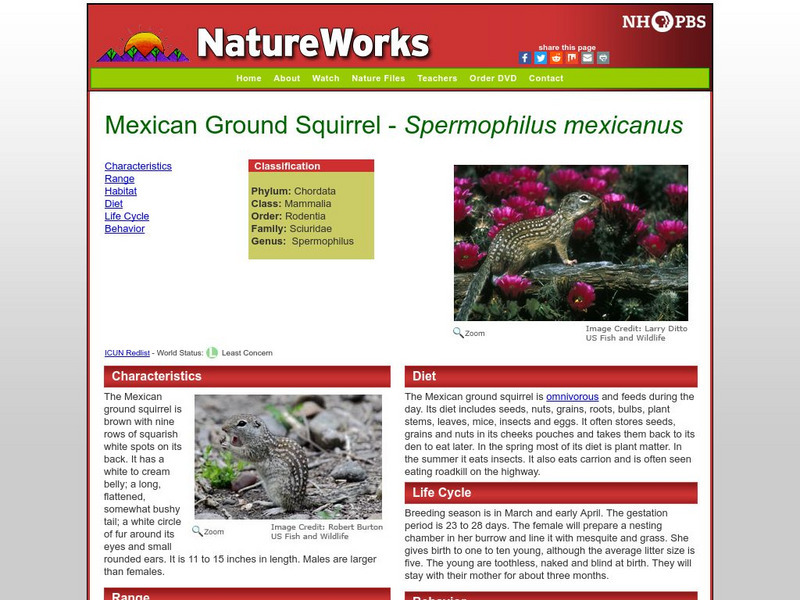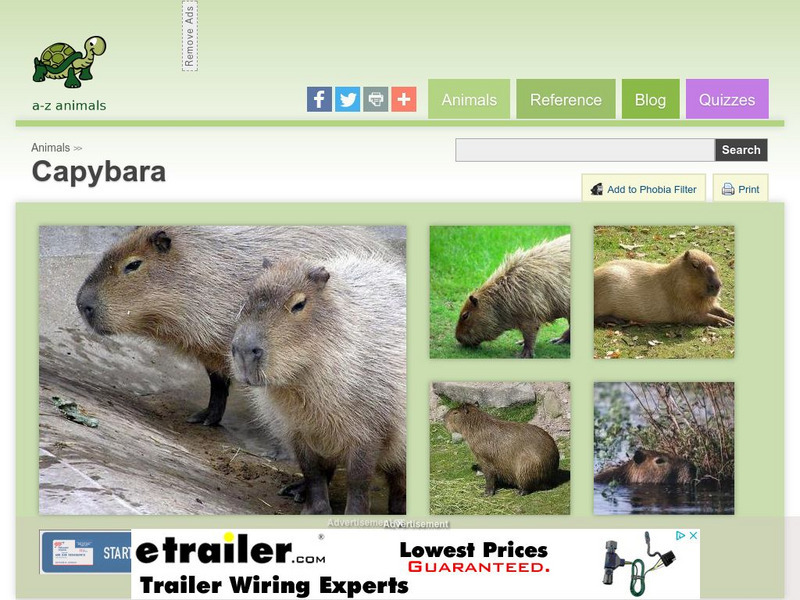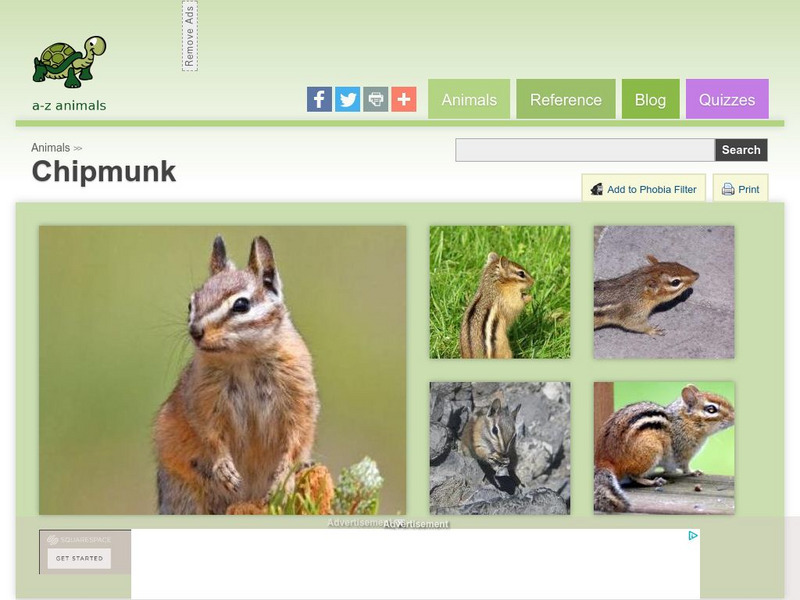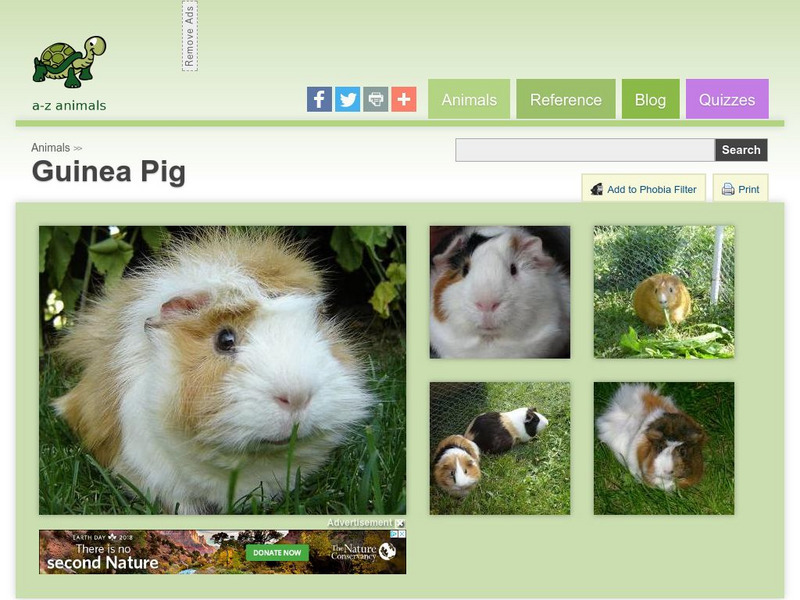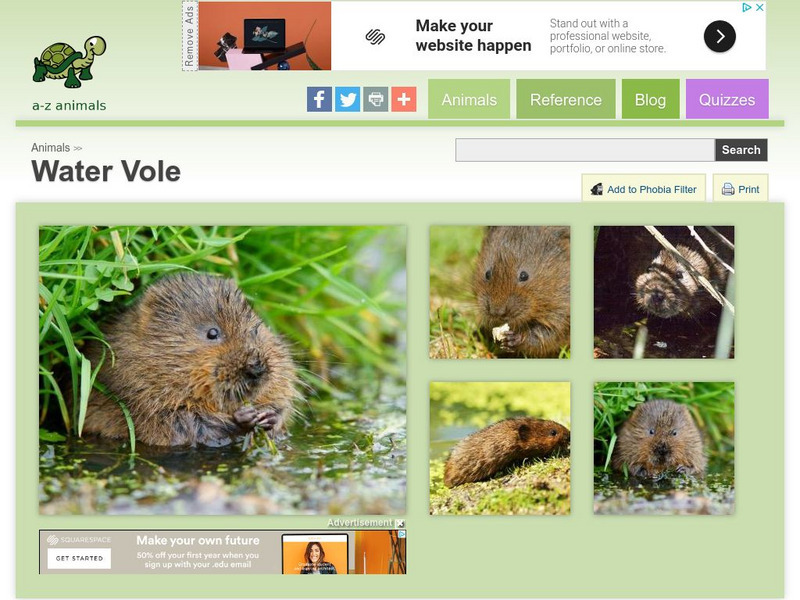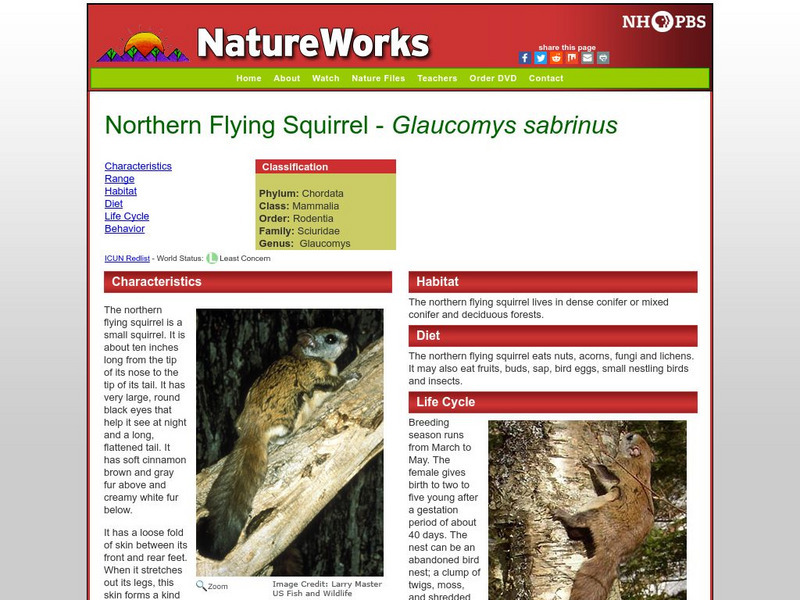PBS
Nh Pbs: Nature Works: Eastern Fox Squirrel
Learn more about the eastern fox squirrel through this educational resource. Students will discover facts about this mammal's habitat, diet, characteristics, range and more.
PBS
Nh Pbs: Nature Works: Golden Mantled Ground Squirrel
This source looks at the Golden-mantled Ground Squirrel. Examine the behavior, characteristics, range, habitat, diet, and life style of this fascinating ground squirrel.
PBS
Nh Pbs: Nature Works: Hoary Marmot
What do you want to know about the Hoary Marmot? Check out this educational resource featuring information on behavior, range, habitat, life cycle, characteristics, and diet.
PBS
Nh Pbs: Nature Works: Mexican Ground Squirrel
The Mexican ground squirrel can be found from Northern Mexico north along the Gulf coast of Texas and into western and central Texas and southeastern New Mexico. This resource includes content ranging from characteristics and life cycle...
CNN
Cnn: Virus Carried by Mice Is a Mysterious Killer
This 1995 article details the case of a 55-year-old man who died of a hantavirus infection after an outing in the Sierra Nevada. Discusses mortality rate, carriers, ways to decrease risk.
Missouri Botanical Garden
Missouri Botanical Garden: Eurasian Beaver
Here you can learn all about the Eurasian beaver, a large European rodent that lives in the taiga biome. Content includes information on this animal's appearance, diet, behavior, and more.
Smithsonian Institution
National Museum of Natural History: Arctic Studies Center: Lemmings
This Smithsonian website has a brief, but thorough, article on the Lemmings that also includes a picture and a quote from naturalist Edward Nelson.
Regents of the University of Michigan
Animal Diversity Web: Muskrat
Comprehensive reference information about the muskrat. Includes taxonomic classification, specimens, pictures, and other details about this semiaquatic rodent.
Regents of the University of Michigan
Animal Diversity Web: Rodentia: Rodents
Images and pictures of rodents. Common and scientific name are given with the picture.
Animal Fact Guide
Animal Fact Guide: Capybara
A reference source on the capybara that features information on its physical characteristics, habitat (with a distribution map), diet, breeding patterns, unique traits and behavior, conservation status, and tips on what you can do to help.
Other
Encounters: Wild Explorer: Beaver
Scroll to Beaver to learn comprehensive facts about the lives of the impressive beaver with pictures and sounds, by anthropologist, Richard Nelson.
A-Z Animals
A Z Animals: Animal Facts: Capybara (Hydrochoerus Hydrochaeris)
View photos and read facts about the Capybara, a large, semi-aquatic rodent, including their evolution, appearance, habitat, diet, behaviour, breeding, and conservation status.
A-Z Animals
A Z Animals: Animal Facts: Chinchilla (Chinchilla Lanigera)
View images and read facts about Chinchillas, including where they live, their appearance, diet, and behaviour.
A-Z Animals
A Z Animals: Animal Facts: Chipmunk (Tamias Striatus)
View images and learn facts about Chipmunks, including where they live, their appearance, diet, and how they disguise themselves from predators.
A-Z Animals
A Z Animals: Animal Facts: Dormouse (Gliridae)
Explore images and facts about the Dormouse, including details on its appearance, habitat, breeding, diet, behavior, and much more.
A-Z Animals
A Z Animals: Animal Facts: Grey Mouse Lemur (Microcebus Murinus)
This entry identifies the defining characteristics of Microcebus Murinus, more commonly known as the Grey Mouse Lemur.
A-Z Animals
A Z Animals: Animal Facts: Guinea Pig (Cavia Porcellus)
This entry identifies the defining characteristics Cavia Porcellus, more commonly known as the guinea pig.
A-Z Animals
A Z Animals: Animal Facts: Hamster (Mesocricetus Auratus)
This entry identifies the defining characteristics of Mesocricetus Auratus, more commonly known as the hamster.
A-Z Animals
A Z Animals: Animal Facts: Hare (Lepus Europaeus)
This entry identifies the defining characteristics of Lepus Europaeus, more commonly known as the hare.
A-Z Animals
A Z Animals: Animal Facts: Indian Palm Squirrel (Funambulus Palmarum)
Provides an overview of the Indian Palm Squirrel, including their habitat, appearance, behaviour, breeding, and much more. Images of this species and statistics can also be found here.
A-Z Animals
A Z Animals: Animal Facts: Lemming (Lemmus Lemmus)
View images and read statistics and facts about Lemmings, including where they live, their appearance, diet, behavior, and breeding habits.
A-Z Animals
A Z Animals: Animal Facts: Water Vole (Arvicola Amphibius)
This entry identifies the defining characteristics of the Arvicola amphibius, otherwise known as the water vole.
African Wildlife Foundation
African Wildlife Foundation: Porcupine
Resource takes an exploratory look at the crested porcupine, found throughout East Africa. Content includes information on the porcupine's physical characteristics, habitat, behavior, diet, caring for the young, predators, and more.
PBS
Nh Pbs: Nature Works: Northern Flying Squirrel
This site provides a look at the Northern Flying Squirrel. Students and teachers can access information relating to behavior, characteristics, range, habitat, life cycle, and diet through this educational site.


